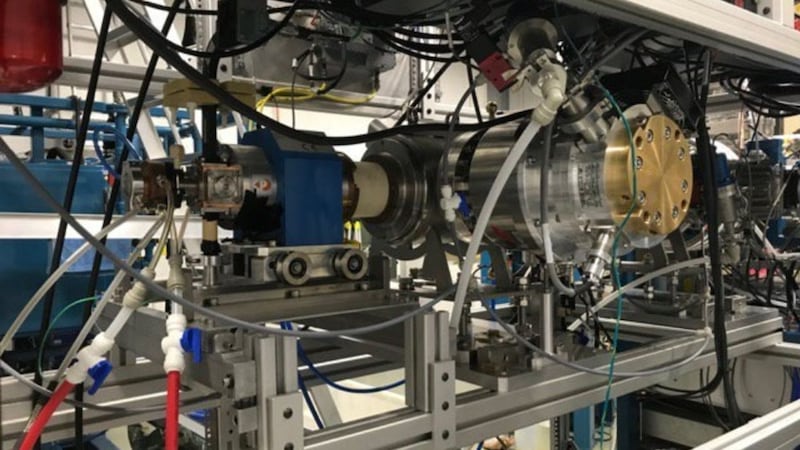Scientists have developed a new carbon dating system which is twice as fast as existing technologies and will “transform” the process.
The new Positive Ion Mass Spectrometry (PIMS) system has been installed at the Scottish Universities Environmental Research Centre (SUERC) in East Kilbride, South Lanarkshire.
Carbon dating is used to determine the age of materials and artefacts of biological origin such as plants, fossils, bones, shells, soil and more – up to around 50,000 years old.
It works by measuring residual concentrations of carbon-14, a radioactive isotope, in the material, which decrease over time.
Scientists said the new PIMS system has halved the time it takes to date carbon-containing material from anywhere in the world, and is much simpler.
Dr Richard Shanks, of SUERC, said: “Until now, carbon dating was a laborious procedure because of the preparation involved. We had to extract tiny samples from the material, whether a bone, piece of soil or a fibre, and burn the samples to turn them into carbon dioxide gas.
“We then had to clean up the carbon dioxide, convert it to solid carbon, and measure the carbon-14 on a particle accelerator.
“PIMS is different from every other radiocarbon dating technique available. It’s a gas accepting system without the need for a high-energy particle accelerator.
“We use a strong plasma to generate a large current of charged carbon atoms in a beam and a gas collision cell to flip the charge from positive to negative.
“This way we ‘clean’ the beam and get enough carbon-14 to measure. Working with carbon dioxide gas saves preparation time and having no accelerator simplifies the instrument, so scientists don’t need a specialised laboratory.”
The new PIMS system was part-funded by the Natural Environment Research Council (NERC) and developed by SUERC, the USA’s National Electrostatics Corporation and French company Pantechnik.
Professor Stewart Freeman, senior scientist in advanced mass spectroscopy at SUERC, said: “The PIMS system is a genuine breakthrough in carbon dating technology. It is not an exaggeration to say the global carbon dating community has its eyes on East Kilbride to see how this advances our field.”
He added: “It will transform carbon dating, which remains a specialist area of research with only around 200 laboratories worldwide.”
The SUERC scientists have gone from working with a system the size of a large bus, to one the size of a small family car.
Researchers said the new PIMS system promises much faster measurements, cutting the time needed to process samples and produce a measurement and is also much more compact and significantly cheaper than the other carbon-dating technologies available.








